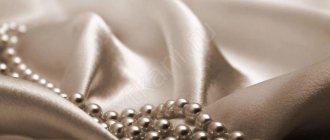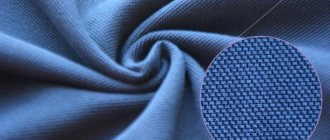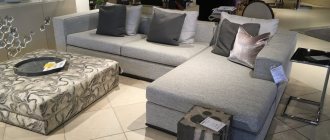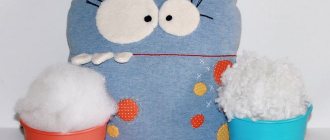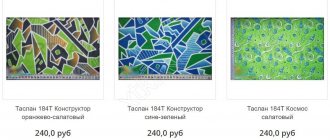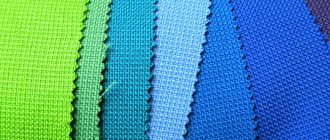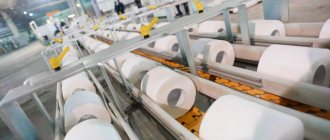Artificial silk fabric is a beautiful, worthy, high-quality replacement for natural linen. What would clothes look like if people didn't know silk? It is difficult to imagine a man's suit without a tie, a woman's neck without a scarf or headscarf, a skirt without thin feminine blouses. Over the past hundred years, material from the category of status fabric for high society balls and receptions has moved into the category of familiar things, without which our lives cannot be imagined.
A little history
Natural silk was created in China in ancient times from the cocoon of a silkworm butterfly. Legend has it that his wife came up with the Yellow Emperor, the father of the Celestial Empire. China, on pain of death, prohibited the export of eggs of these insects from the country. In the 6th century, Justinian, the ruler of Byzantium, wanted to get silkworm larvae. Missionary monks brought them to him in a bamboo stick.
The fabric made from this fiber is so good that throughout Europe, at royal courts, wearing silk clothes was considered a sign of belonging to the highest caste. It is no coincidence that, since the Middle Ages, scientists have tried to obtain a similar fiber artificially. This was only possible at the turn of the 19th and 20th centuries. The fiber was called viscose silk, and it was patented in 1902 in England.
Matter quickly conquered the whole world. In the second half of the 20th century, the production of synthetic silk began. Many people confuse these concepts, believing that they are the same thing. However, there is a difference in composition and properties between synthetic and viscose material.
Properties
The main characteristics of artificial silk include:
- High density. The material is resistant to alcohol and vinegar. It can only be damaged if acid or alkali gets on the fabric;
- Shine and beautiful shimmer. The ribbed silk garment fits comfortably to the body and flows beautifully. That's why it looks great on the body;
- Hypoallergenic properties. Artificial silk absorbs unpleasant odors and does not provoke allergies. It prevents the growth of bacteria that can spoil the condition of the skin;
- Does not burn. If a spark hits the fabric, it will smolder.
Other characteristics depend on the type of silky fabric. They will be discussed in more detail below.
Kinds
There are 2 types of artificial silk:
- viscose;
- acetate silk.
These types of silk fabrics are not identical. Upon careful examination, you can notice differences in the composition and properties of silk fiber. If you are purchasing clothing or home textiles, carefully read the silk fabric label.
Viscose is an artificial silk made from natural cellulose. Under the influence of alkali, the material becomes hydrated cellulose, which is the basis for viscose. This material was first discussed at the beginning of the 19th century. Then it was used in the manufacture of clothing.
Acetate fiber is made from cellulose acetate. It is a polyester, and consists of cellulose and acetic acid. This material first became known in the 20th century. Acetate fiber is quite common and is used for sewing many products. This can be not only outerwear, but also underwear. Acetate fiber can be used as a material for electrical insulation.
The main characteristics of this type include:
- elasticity;
- resistance to dents;
- moisture-repellent properties.
How fabric is made
The starting raw material is cellulose - a polysaccharide that is part of plant cells; it is obtained from wood. This is the difference between such material and synthetic ones. To avoid confusion, labeling rules prohibit calling the fiber rayon, but require it to be labeled as viscose or acetate. The production process is as follows:
- The crushed cellulose is exposed to alkali (caustic soda) and pressed.
- Pre-ripening. The resulting substance is crushed and left for some time to polymerize.
- Preparation of xanthate. The raw materials are placed in sealed containers filled with nitrogen.
- Dissolution of xanthate. The output is transparent viscous viscose, which is left to age.
- Liquid viscose is pressed through dies into a precipitation machine with a mixture of acids. Fibers are formed.
- The fibers are spun into threads. Textile factories use them to produce fabrics.
- An important step is the precipitation bath. The composition of the acids in it and the temperature completely determine the properties of the fiber and future fabrics. Manufacturers keep these parameters in the strictest confidence.
What is synthetic silk
Artificial silk is a fabric with a smooth surface, soft to the touch, and shiny. Outwardly, it is very similar to natural, but its raw materials are not silkworm cocoons, but cellulose, which is treated with alkali. Used to create clothing and accessories - light scarves, shawls, ties.
Fabric examples
History of origin
Natural silk was created in China. The material was expensive and needed special care, and the materials for its creation were not unlimited. Then, in the 19th century. Louis Chardonnay, a chemist from France, introduced the world to artificially created fibers, which were later given the name “Viscosus” (“viscous”). Viscose was no different from silk, it was just as shiny and absorbed water well.
The creation of synthetic silk required much less costs, and, accordingly, the price was lower. People bought the analogue of expensive fabric en masse, and the number of factories producing viscose grew in the world.
Chinese silk
For your information! In 1930, viscose silk outsold natural silk by 8 times.
Composition and properties
Artificial silk is made from natural cellulose, which, after exposure to alkali and acid, is processed into fibers. Polyester is made synthetic.
Characteristics of artificial fabric:
- absorbs water well, better than cotton;
- light;
- smooth;
- not electrified;
- the skin in products made from this material breathes.
Viscose scarf
Please note! To make the cost of silk fabric even lower, manufacturers add other chemical fibers and substances to their composition. The quality is not great from this, but it suffers. In cold weather, only a natural silk item can warm the body.
Secrets of production
The production of viscose consists of two stages - obtaining and shaping.
- The main element in the composition - cellulose - is boiled in a solution of wood, transferred to the surface of a conveyor and dried.
- Alkali is added to the raw material, which increases in size (swells).
- The cellulose is squeezed out and crushed. Afterwards, a series of chemical effects occur: oxidation with oxygen, treatment with carbon disulfide and dissolution in sodium.
- The substance is left for several days. It must reach the standard, only then will it turn out to be viscose.
- From the filter it enters the spinning machine, where the raw material is exposed to acid (with a duration of 3 minutes, cellulose nitrate is obtained, with a duration of 17 minutes, trinitrocellulose). It hardens and produces threads, which are then cut into fiber.
- Also, after the threads are formed, the future material is painted. Only then is it sent for final drying.
You might be interested in Features of using self-adhesive Alcantara for cars
Recycling process
Advantages and disadvantages
Externally, a thin artificial substitute is similar to natural fabric, but in its chemical and organoleptic properties it is closest to cotton. This is not surprising, since the basis of the fibers of both viscose and cotton is vegetable cellulose. Compared to analogues, the fabric has undoubted advantages:
- absorbs moisture well, hygroscopicity is twice as high as that of cotton;
- softness, comfortable tactility;
- ease;
- has a perfectly smooth texture;
- breathability is the same as cotton, lower than natural silk, but higher than synthetic;
- does not condense static electricity unlike synthetics;
- drapes well;
- The coloring is permanent and does not fade;
- hypoallergenic - unlike synthetic analogues, does not cause skin irritation and allergic reactions;
- durability - superior to natural silk and cotton.
In addition to its advantages, the fabric has some disadvantages compared to its natural counterpart:
- artificial material wrinkles; to eliminate this property, synthetic fibers are often added to its composition (usually polyester, less often polyamide or polyester);
- when wet, it deforms, loses elasticity, and can tear;
- It allows air to pass through worse than natural fabric;
- warms less;
- does not have a bactericidal effect.
Areas of use
Their cellulose fibers produce several types of silk fabrics:
- viscose silk is a good quality imitation. Depending on the weaving technology, almost the entire range of traditional silks can be produced (satin, chiffon, gauze, organza, crepe, etc.);
- acetate silk is cellulose (mainly waste from the woodworking industry in the form of wood chips) treated with acetic acid. It wrinkles less, holds wrinkles, and does not deform when wet. At the same time, it does not absorb moisture and is electrified. In recent years, the material has been losing popularity;
- cupra – copper-ammonia fibers. In the technological cycle, copper sulfate and ammonia are used at the xanthate dissolution stage. This feature of the technology makes it possible to bring cupra as close as possible to its natural counterpart, making it more breathable, durable and elastic. The disadvantage of the fabric is its high price;
- Modal is a fabric made from eucalyptus cellulose. Possesses the bactericidal properties of the original tree. Used to produce high-quality expensive bed linen;
- Lyocell is a fabric that is practically no different from natural fabric. The price is high.
Artificial silk has found recognition and widespread use. It is used in sewing a wide variety of products.
- Bed linen made of artificial silk has an excellent appearance, while the price of the set is several times lower than that of a similar set made of natural fabric.
- All kinds of clothing - you can find attractive and practical blouses, scarves, stoles, scarves, and children's clothing on sale. Dresses made of artificial silk are especially in demand.
- Artificial silk underwear, elegant and very feminine dressing gowns are an extremely popular option; you can use this fabric to make a stylish and elegant set at a very reasonable price.
- Interior decoration - bedspreads and even carpets made of artificial silk are successfully complemented by curtains made of the same material.
Types of silk
Silk cambric
Only 3% of silk is contained in this fabric. The plain weave of the threads creates a thin translucent fabric.
Bed linen and decorative items are made from cambric, but a long, floor-length dress will look especially elegant.
Organza
This type of transparent silk fabric is distinguished by its special shine and rigidity. Drawings and embroideries fit perfectly on it. It can be matte or glossy.
Most often used for sewing wedding dresses, costumes for oriental dances, and curtains.
Atlas
With the help of technology, the satin has 2 different sides: the front has a glossy look, and the second has a matte look. This effect is created by a special weaving. It is distinguished by density and smoothness.
Satin fabric is used to create skirts, umbrellas, sleeping shirts, linings, curtains, and ties.
Silk-satin
Satin fabric is a type of satin. Made with the addition of cotton. Often used to print a pattern, sometimes even on both sides.
The material has a glossy shine and is used for sewing dresses, blouses and men's shirts.
Crepe
The transverse twisting of the threads gives the material a softness and roughness similar to sand.
Crepe is thick silk with beautiful waves. Does not wrinkle and drapes wonderfully.
Dresses are often made from it.
Gas (illusion, rice, marabou, crystal)
This type of fabric has a special weave: when 2 warps intersect with the weft thread, no compaction occurs, which gives the material tenderness and translucency. The gas is very soft and airy.
Illusion gas - more like a spider's web and is made from the thinnest thread of yarn. Used for light finishing of wedding accessories, light scarves, curtains.
Plain rice weaving of raw silk will create a light transparent fabric - gas-rice. It is a little rough, thanks to the unusual binding.
Marabou gas is produced by tightly twisting the threads. It is hard and has a golden hue.
The gas crystal looks like a precious stone. The surface of the material shimmers and shines brightly. This effect occurs because threads of different colors are involved in weaving.
Taffeta
Taffeta is made with the addition of cotton threads, as well as synthetic impurities.
Thanks to the tight twisting of the threads, it is particularly rigid and dense. Keeps its shape well.
Products made from such fabric will be voluminous and lush, due to the fact that folds are formed during sewing, so dresses made from it look especially elegant and rich.
Chiffon
Chiffon is a light matte fabric, slightly rough. Produced by twisting thin fibers. It has an airy look, ideal for sewing summer pareos. Does not stretch and drapes well.
Toile
The plain weave of the toile has a delicate shine and a dense silk texture. It holds its shape perfectly, so it is used for sewing linings.
Clothes made from it will not create a greenhouse effect in the summer, and if properly cared for, will be durable.
Crepe de Chine
A type of crepe fabric with a dense structure and a grainy twisted surface. Has the ability to hug the figure.
For several centuries now, it has been the most popular natural silk, and every woman dreams of having items made from it. The material drapes easily and flies in a loose fit, dries quickly and is elastic.
Cadi
Cady is a matte material, similar to double crepe due to its multi-layer structure.
Its texture resembles a flowing waterfall: it dissolves and absorbs light, and is slightly elastic. It has different sides: one is made of crepe, the other is satin or satin.
The big advantage of cadi is that it does not shed.
Foulard
The thinnest fabric made from natural silk. Bundles of fibers are not twisted during production, so foulard is the softest material. Head scarves, scarves, and scarves are made from it.
DuPont
DuPont is a high-end fabric with a subdued shine. The warp consists of an untwisted thread, and the cut one is used as a weft thread. It is one of the most expensive fabrics.
Exclusive wedding and evening dresses are made from it. Her bed linen looks no less luxurious.
Chesucha
Chesucha is wild silk. It is made from threads of different thicknesses, so it is dense with a slight shine, drapes easily, and does not require special care during operation.
The comb fabric is suitable for sewing curtains and clothes.
Brocade
Brocade has always been considered a royal noble fabric. Such heavy material was embroidered with threads made of precious alloys.
Today, linen threads are used more for drawing, but there are exceptions where metal coils are used.
Product care
Artificial silk items require careful care:
- hand wash, or, as a last resort, machine wash in the “delicate wash” mode;
- The products cannot be twisted, you can squeeze them slightly and let the water drain on their own;
- dry in a horizontal, straightened position;
- iron with a low-heat iron.
The imitation of natural fabric, created as a result of advances in science and technology, made it possible to preserve all the advantages of the original plant material, its environmental friendliness, hypoallergenicity and friendliness towards humans, while the price of the fabric turned out to be quite affordable. This is the secret of the enduring popularity of this amazing material.
Application and care
Application of material
Silk is in great demand in the clothing industry. Clothes of amazing beauty and high practicality are made from it. This material has become an excellent raw material for sewing bed linen. Sleeping sets are in great demand among the population due to their softness and attractiveness.
Article on the topic: Gerdan made of beads with patterns for beginners with photos and videos
Artificial silk material is also used to make curtain compositions. “Clothing” for windows turns out to be surprisingly beautiful and durable.
Washing and ironing
As for care, we can say that artificial silk material is not particularly demanding. Of course, products made from synthetic raw materials require delicate treatment: hand washing, ironing on low heat, drying in places protected from direct sunlight . Otherwise, there are no special care recommendations for this synthetic material.
